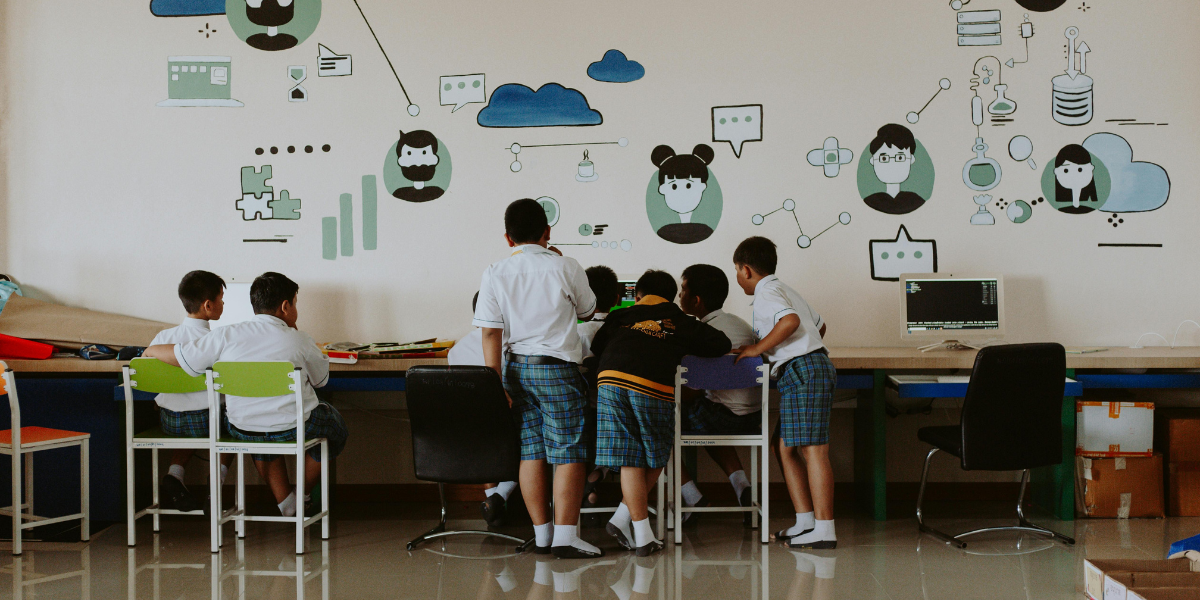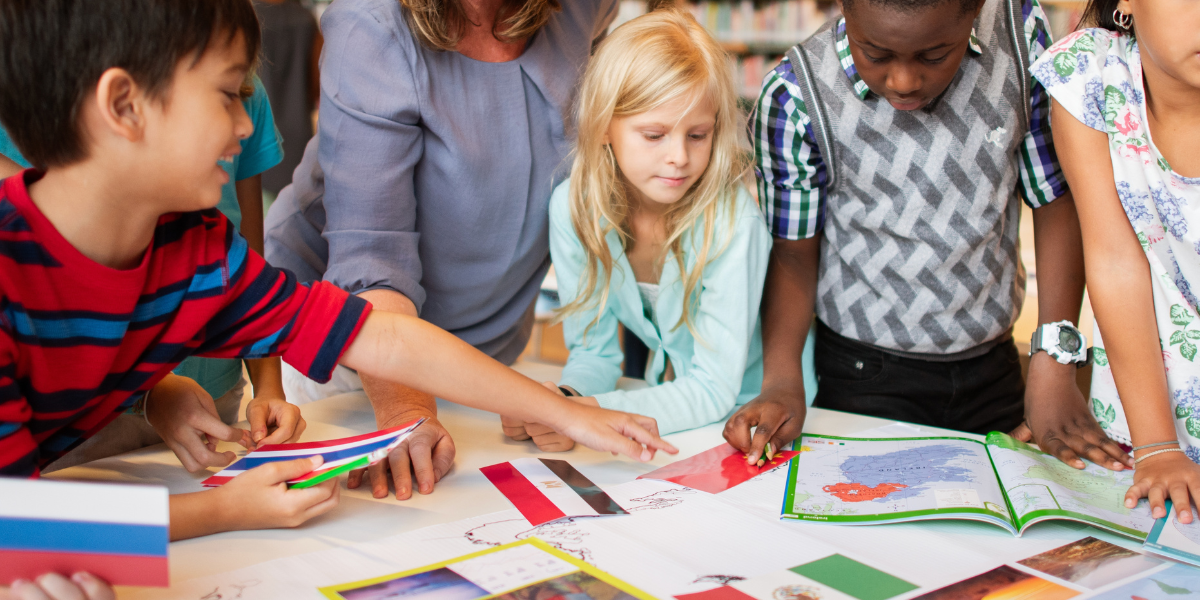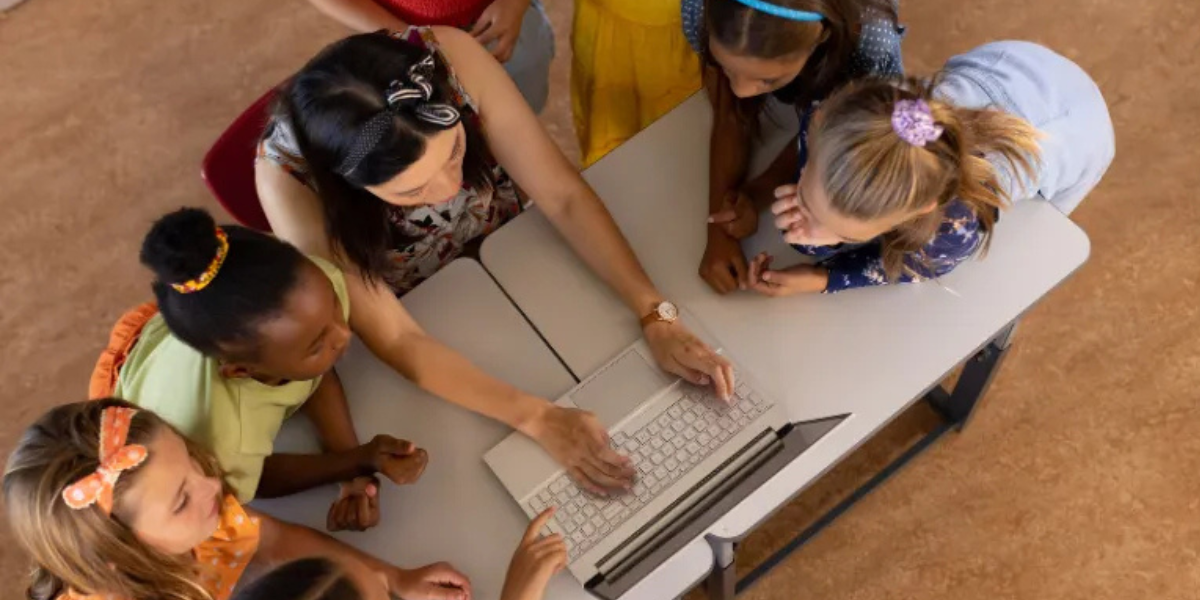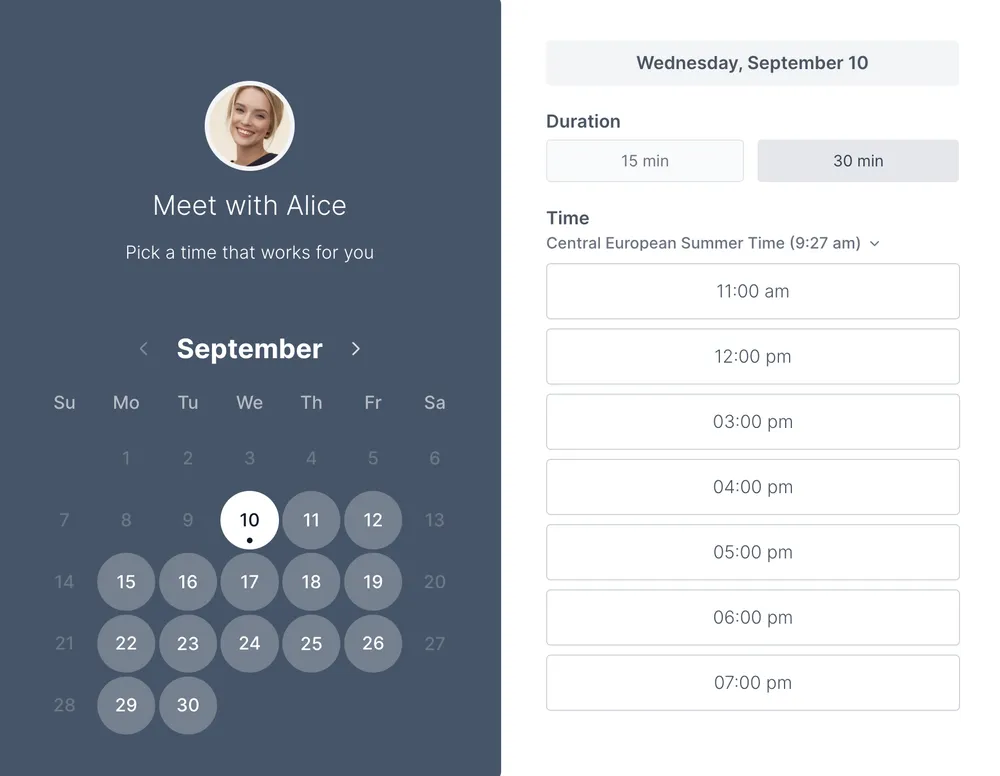Do you remember what your group projects were like? You and your peers huddling around a blank poster board, coordinating your schedules to find a time to meet after school, or one student doing most of the work to save you all the trouble.
Today however, collaborative technology tools for students in the classroom are painting a new picture: transforming group work from a logistical nightmare into a dynamic, engaging learning experience. The powerful collaborative digital learning tools we’ll cover are designed to boost your students’ engagement and cultivate the teamwork skills that will carry them into their future.
If you’re a school leader or teacher looking to foster an interactive, vibrant learning environment, you’re in the right place. This helpful guide will outline the best collaborative digital learning learning tools, and explain how and why they’re so important for today’s educational world. We’ll also provide you with practical advice on how to choose and implement the perfect teamwork tools for classrooms.
Let’s make your classroom a hub of collaboration and launchpad for student creativity!
What are collaborative digital learning tools in education?

In simple terms, collaborative classroom technology is any digital tool that allows students to work together on a group project or task, often in real-time and across devices. You can think of it as a digital workshop in which ideas are shared, edited, and collaboratively generated—moving far beyond the classic “divide and conquer” approach.
The online collaboration tools for students featured here are much more than just a way to share files. They’re deliberately designed to spark active learning by helping students communicate, co-create, and problem-solve as a team.
Whether your students are all in the same room or joining remotely for online or hybrid class work, these collaborative digital learning tools remove both physical and logistical barriers of the traditional classroom, creating the ideal circumstances for your students’ learning.
Why collaborative learning tools matter for modern classrooms

The goal in using collaborative classroom technology isn’t simply cool tech: it’s to improve learning outcomes and prepare your students for a rapidly changing and digitized learning world. A recent study on collaborative learning by the University of Montana highlighted that this type of learning can significantly increase student achievement and develop critical social-emotional skills.
Let’s take a closer look at why embracing collaborative digital learning tools can be a transformative approach for educators and students:
- Builds essential real-world skills: Today’s workplace is fueled by digital know-how and collaboration. Using teamwork tools for classrooms does far more than teach a subject: it readies students for their future careers by teaching skillful communication, digital literacy, and project management.
- Boosts student engagement and accountability: When your students are able to see their classmates collaborating in real-time on a shared whiteboard or collaborative document, it generates a strong sense of shared motivation and purpose. This dynamic especially facilitates peer accountability and active learning since everyone’s contributions are clear and on display.
- Saves you time and improves teaching efficiency: Rather than tracking down lost work or mediating group disagreements, you can easily check student progress and contribution history via project boards or shared documents. This way, you can offer necessary feedback and guide the process in a more timely and effective manner. Improved instructional efficiency means you can spend less time on group management and more on actual teaching.
- Directly combats “working in silos”: How often have you seen groups in which one student takes over, or everyone works separately until the last second, resulting in miscommunication and a final project that misses the mark? Collaborative digital learning tools introduce transparency that directly combat this issue. With teachers able to see contribution history in shared documents and platforms, each student is better encouraged to have an active role throughout the process, ensuring real teamwork.
The best collaborative technology tools for students
There’s no need to start using all of these tools at once. In fact, starting with just one or two can make a real difference. Here’s a breakdown by category that’ll help you find the best ones for your daily activities and classroom group projects.

Document-style collaboration tools for students
Group projects can be tricky. One of the biggest challenges is students working in silos, each doing their part separately. The result? Misunderstandings between teacher and students and too often, a last-minute scramble to put something together. Document collaboration tools are the perfect solution for this. They allow the whole group to collaborate on the same file at the same time, a feature called real-time co-editing.
Popular tools like Notion, Microsoft 365, and Google Docs, allow your students to co-edit and collaborate using cloud file sharing and pre-designed collaborative templates.
Teachers often use Google Docs for peer reviews and essays, while Notion is better suited for more complex or interdisciplinary projects that require higher-level task management and note taking.
The simplicity of cloud file sharing capabilities can prevent the classic, “I lost my USB drive” issue and makes sure that your students’ work is automatically saved and accessible from almost anywhere.
The up-side’s to these particular group work collaboration tools are clear:
- Real-time co-editing means no more emailing documents back and forth or confusion over which version is final.
- Cloud file sharing also means your students’ work is never lost and can be accessed across devices.
- Suggest and comment modes help streamline teacher and peer feedback, making editing a collaborative and conversational activity, easier and more enjoyable for everyone.
Communication and discussion platforms

Great collaboration begins with good communication. These platforms offer dedicated, structured spaces for students to talk, share ideas, and ask questions without the noisy distractions of messy group texts or social media platforms.
Platforms such as Padlet, Edmodo Classroom, Slack, EducateMe, and Microsoft Teams can all help foster dynamic environments for discussion. Padlet and Edmodo Classroom are great for creating vibrant digital hubs ideal for K-12 students. They allow students to check-in, brainstorm, discuss, and continue conversations.
EducateMe offers an interactive yet structured space perfect for running an organized online classroom that highlights student voices. For long-term group work or more complex projects, platforms like Microsoft Teams and Slack provide channel-based communication that helps keep older students connected and focused.
These platforms can be high-impact teamwork tools for classrooms because they keep the conversation clear, organized, and focused on learning.
Using classroom collaboration software options can help:
- Centralize your students’ group communication, significantly reducing any messaging or email clutter and confusion
- Cultivate ongoing dialogue that goes beyond the end of the school day, creating a vibrant and continuous learning community
- Keep a digital record of group decisions and the progression of ideas, which is invaluable for later assessment and reflection

Multimedia and creative collaboration
Not all projects will or should end in the classic five-paragraph essay. For STEM labs, creative classroom workshops, or art classes, students need dynamic tools that will facilitate group collaboration. This is where collaborative digital learning tools really shine, enabling students to express their learning and creativity in meaningful ways.
Tools like Canva for Education, Flipped, and Miro are great for hybrid-style collaboration and can help you and your students unlock creative potential.
Your students can create presentations together on Canva, record and respond to short videos on Flipped, or even brainstorm on an infinite collaborative whiteboard using Miro. These group work collaboration tools all come with ready-made templates for research posters, mind maps, and storyboards, providing students an extra creative edge.
These classroom technology collaboration tools are ideal for:
- Getting students to demonstrate their progress in a variety of formats, attending to diverse learning styles and preferences
- Encouraging creative problem-solving and visual thinking during dynamic group activities
- Interdisciplinary projects that bring together design and research work, like crafting an explanatory scientific video or historical magazine
| Tool | Category | Features | Best For |
| Notion | Document-style collaboration | Real-time co-editing, cloud file sharing, collaborative templates, task management, note-taking | Complex, interdisciplinary projects requiring higher-level organization and management |
| Microsoft 365 | Document-style collaboration | Real-time co-editing, cloud file sharing, collaborative templates (Word, PowerPoint, Excel) | Co-editing documents, spreadsheets, and presentations; peer reviews and essays |
| Google Docs | Document-style collaboration | Real-time co-editing, cloud file sharing, comment and suggestion modes | Peer reviews, collaborative essays, and simple group projects with seamless cloud access |
| Padlet | Discussion and communication | Digital hub for brainstorming, discussion, and check-ins; vibrant, structured space | Creating vibrant digital hubs for K-12 students to brainstorm and continue conversations |
| Edmodo Classroom | Discussion and communication | Digital hub for discussion, check-ins, and continuing conversations; structured space | Fostering dynamic environments and continuous learning communities for K-12 students |
| Slack | Discussion and communication | Channel-based communication, group chat, file sharing | Long-term group work and complex projects for older students; keeping teams connected and focused |
| EducateMe | Discussion and communication | Interactive, structured discussion space | Running an organized online classroom that highlights student voices |
| Microsoft Teams | Discussion and communication | Channel-based communication, integrated with Microsoft 365, group chat | Long-term group work, complex projects, and keeping older students connected and focused |
| Canva | Multimedia and creative collaboration | Collaborative presentations, pre-built templates (posters, mind maps), cloud file sharing | Group presentations and creative projects; interdisciplinary projects combining design and research |
| Flipped | Multimedia and creative collaboration | Recording and responding to short videos | Creative projects where students demonstrate learning through video |
| Miro | Multimedia and creative collaboration | Infinite collaborative whiteboard, brainstorming, mind-mapping, pre-built templates | Creative classroom workshops, dynamic group brainstorming, and visual thinking activities |
Key features to look for in classroom collaboration software
With so many options, how do you choose the best collaborative technology tools for students in the classroom? It’s really about the features that most directly align with your teaching objectives.
Here’s a handy list of important features to keep in mind when you’re deciding which classroom technology collaboration tools to use. The most effective tools will offer:
- Real-time co-editing: An essential for collaboration. It ensures your students can work side-by-side on documents, presentations, and spreadsheets. This is pivotal for preventing the tendency of working in silos.
- Cloud file sharing: Offline and automatic saving to the cloud is a life-saver when it comes to preventing lost work and makes it easy for students to have access across devices, at school, or at home. This is essential for the nature of today’s classroom group projects.
- Collaborative whiteboards: A digital place for students to come up with ideas, diagram, and mind-map together. This is an ideal tool to develop your students’ visual thinking skills and foster active learning.
- Group chat and commenting: Integrated communication features in collaborative digital learning tools keep the conversation focused on the task at hand, streamlining student collaboration.
- Peer feedback tools: Features like suggestion modes and comment threads help make giving and receiving constructive criticism smooth, easy, and organized.
- Pre-built collaborative templates: Earn back time and provide key structure with templates for research projects, storyboards, and more, helping your students get their projects kicked-off with ease and confidence.
- Cross-device accessibility: Ensuring each student can fully participate whether they’re on their school laptop, tablet, or home computer—promoting access and equity.
- LMS integration: Aligning with your existing Learning Management System (like Canvas or Google Classroom) for improved workflow and greater teaching efficiency.

Making it work: Practical tips for seamless implementation
Getting used to new tech can feel daunting at first, but a bit of planning and practice goes a long way. Here are some practical tips to ensure success as you learn how to best use collaborative technology tools for students in the classroom. These strategies will help make your classroom more effective and your students better learners.
- Start small and set clear goals: Don’t start with all of them at once. Choose one option that can help solve a given challenge (like using a collaborative whiteboard for a group brainstorming step) and master it with your students before adding in others. This can help you avoid feeling overwhelmed and will allow you to see what works with your students.
- Scaffold your students’ digital citizenship skills: Don’t assume students will know how to use the tool intuitively or effectively. Set aside time to teach the “how” of digital collaboration, just as you would with an academic topic. Be sure to communicate clear guidelines for constructive peer feedback, respectful communication and share tips for how they can best manage their digital workflow.
- Design projects with collaboration in mind: The digital tool is only as good as the task at hand. When planning group projects, be sure to incorporate milestones and tasks that require genuine collaboration. For instance, ask for a minimum number of comments per student on a collaborative whiteboard or in a shared document before they move to the execution phase. This helps guarantee that the technology facilitates collaboration rather than simply creating more individual work that students can pass off as group work.
- Leverage tools for your own efficiency: For staff committees, teacher teams, or student groups that need to schedule meetings, using a tool like Koalendar’s free scheduling software for schools can help eliminate back-and-forth emails and get everyone on the same page quickly. This is a perfect way to improve everyday efficiency and ensure your own collaborative efforts are as smooth as your students’.
Building a more collaborative classroom, together

Integrating collaborative technology tools for students in the classroom is one the best steps you can take to help your students prepare for their future. The collaborative learning tools highlighted here do more than simply facilitate collaborative work; they foster stronger teamwork skills, boost student engagement, and ultimately cultivate a more effective, inclusive, and dynamic learning environment.
From taking on interdisciplinary projects to making hybrid class collaboration a breeze, implementing the right classroom collaboration software transforms potential disagreements or pain points into opportunities for learning.
As a teacher, you understand that crafting a collaborative classroom is an ongoing journey. Thankfully, with the right tools at your fingertips and some practice, teamwork tools for classrooms can have a profound impact. By helping your students overcome barriers to working in silos, you foster a better learning community.
And while your students are busy working together productively, remember that digital tools like Koalendar can help teachers and school administrators streamline their own tasks too. From coordinating educator team meetings to scheduling office hours or conferences with students and families, collaborative classroom technology gives you back the time and energy you need to focus on what you do best: teaching.
Ready to bring better organization to your school’s collaborative efforts?
Try Koalendar’s Free Forever Plan and simplify your scheduling today.






